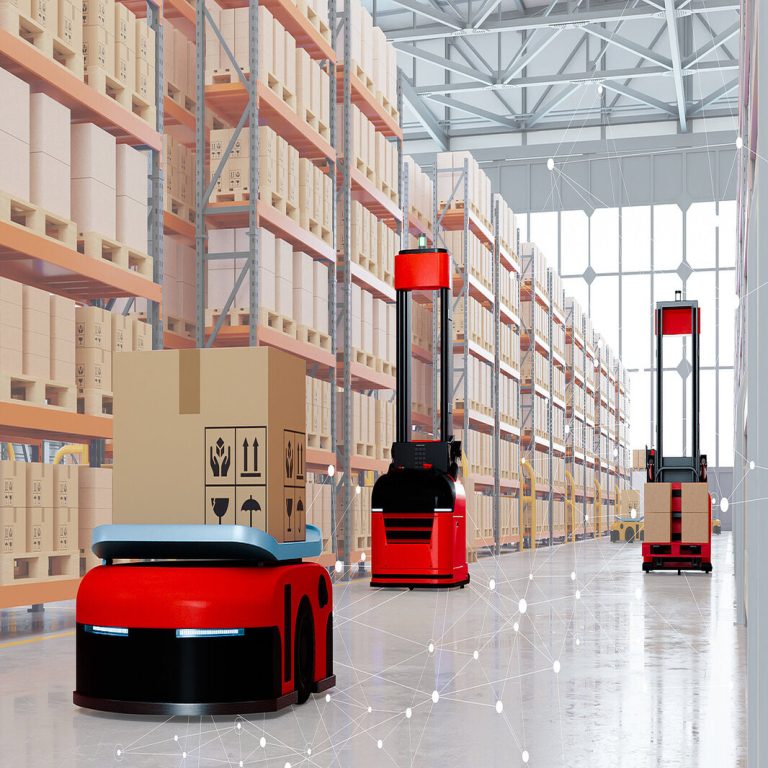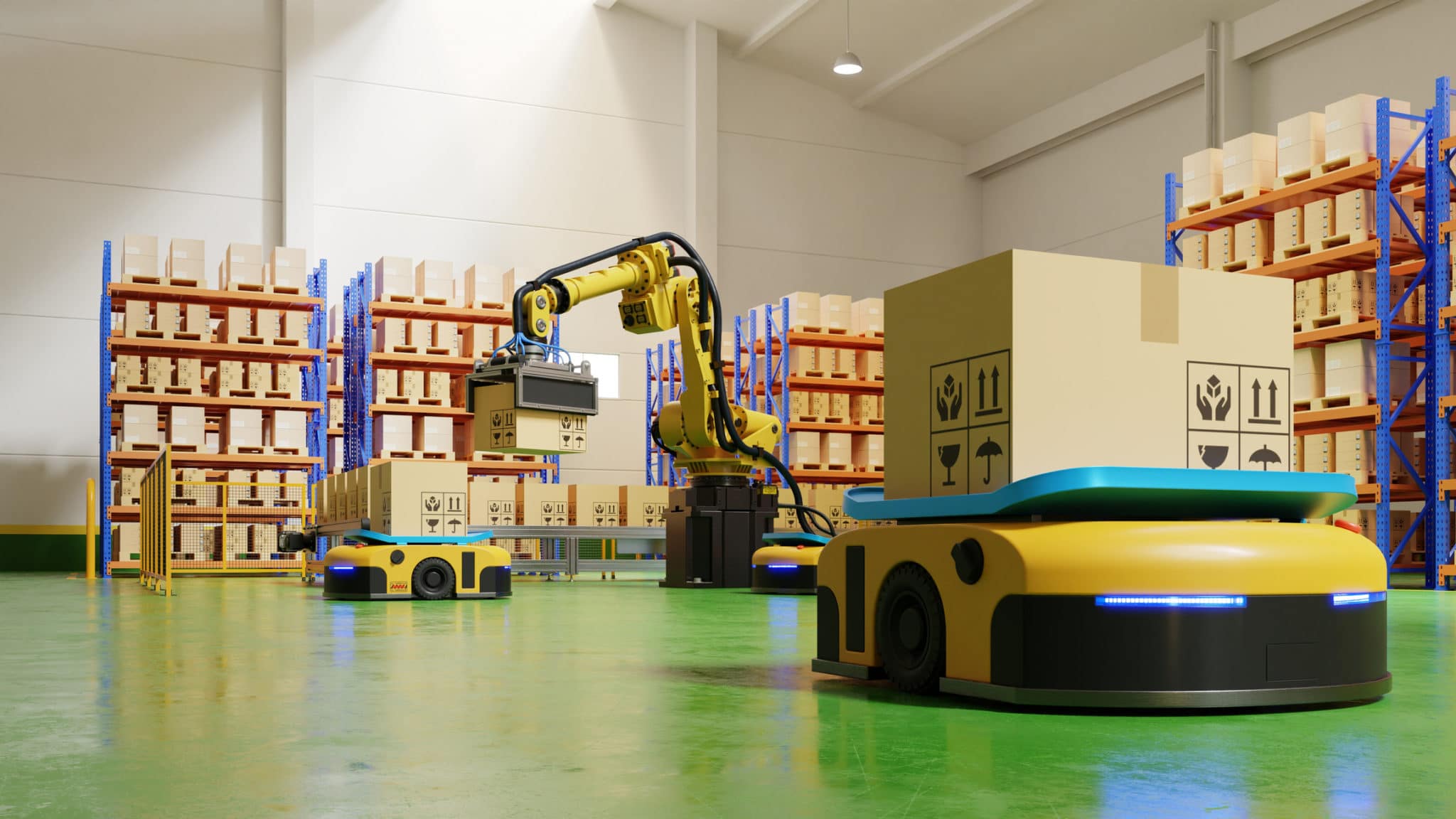Autonomus Guided Vehicle (AGV)/Autonomous Mobile Robot (AMR)

An Automated Guided Vehicle (AGV), adalah robot portabel yang mengikuti garis panjang atau kabel yang ditandai di lantai, atau menggunakan gelombang radio, kamera penglihatan, magnet, atau laser untuk navigasi. Kendaraan ini paling sering digunakan dalam aplikasi industri untuk mengangkut material berat di sekitar bangunan industri besar, seperti pabrik atau gudang. Aplikasi kendaraan berpemandu otomatis meluas selama akhir abad ke-20.

Autonomous Mobile Robot (AMR), adalah mesin otomatis yang mampu bergerak.[1] Robotika bergerak biasanya dianggap sebagai subbidang robotika dan teknik informasi.[2]
Robot bergerak memiliki kemampuan untuk bergerak di lingkungannya dan tidak terpaku pada satu lokasi fisik. Robot bergerak dapat bersifat “otonom” (AMR – autonomous mobile robot) yang berarti mampu menavigasi lingkungan yang tidak terkendali tanpa memerlukan perangkat pemandu fisik atau elektro-mekanis.[3] Sebagai alternatif, robot bergerak dapat mengandalkan perangkat pemandu yang memungkinkannya menempuh rute navigasi yang telah ditentukan sebelumnya dalam ruang yang relatif terkendali.[4] Sebaliknya, robot industri biasanya kurang lebih tidak bergerak, yang terdiri dari lengan bersendi (manipulator multi-link) dan rakitan pencengkeram (atau efektor akhir), yang dipasang pada permukaan yang tetap. Sambungan.
Robot bergerak telah menjadi hal yang lebih umum di lingkungan komersial dan industri. Rumah sakit telah menggunakan robot seluler otonom untuk memindahkan material selama bertahun-tahun. Gudang telah memasang sistem robot bergerak untuk memindahkan material secara efisien dari rak penyimpanan ke zona pemenuhan pesanan. Robot bergerak juga menjadi fokus utama penelitian saat ini dan hampir setiap universitas besar memiliki satu atau lebih laboratorium yang berfokus pada penelitian robot bergerak.[5] Robot bergerak juga ditemukan di lingkungan industri, militer, dan keamanan.
Komponen robot bergerak adalah pengontrol, sensor, aktuator, dan sistem tenaga.[3] Pengontrol umumnya berupa mikroprosesor, mikrokontroler tertanam, atau komputer pribadi (PC). Sensor yang digunakan tergantung pada kebutuhan robot. Persyaratannya bisa berupa perhitungan mati, penginderaan taktil dan kedekatan, jangkauan triangulasi, penghindaran tabrakan, lokasi posisi, dan aplikasi spesifik lainnya.[6] Aktuator biasanya mengacu pada motor yang menggerakkan robot yang bisa beroda atau berkaki. Untuk menyalakan robot bergerak biasanya kita menggunakan catu daya DC (yang merupakan baterai), bukan AC.
